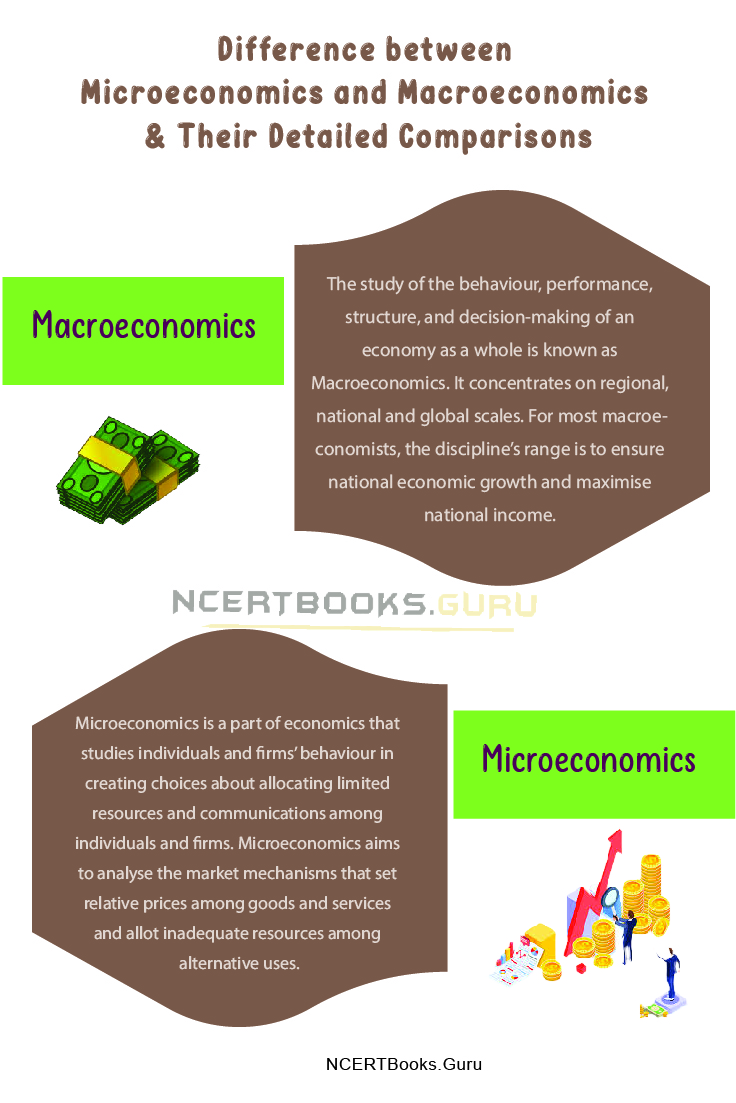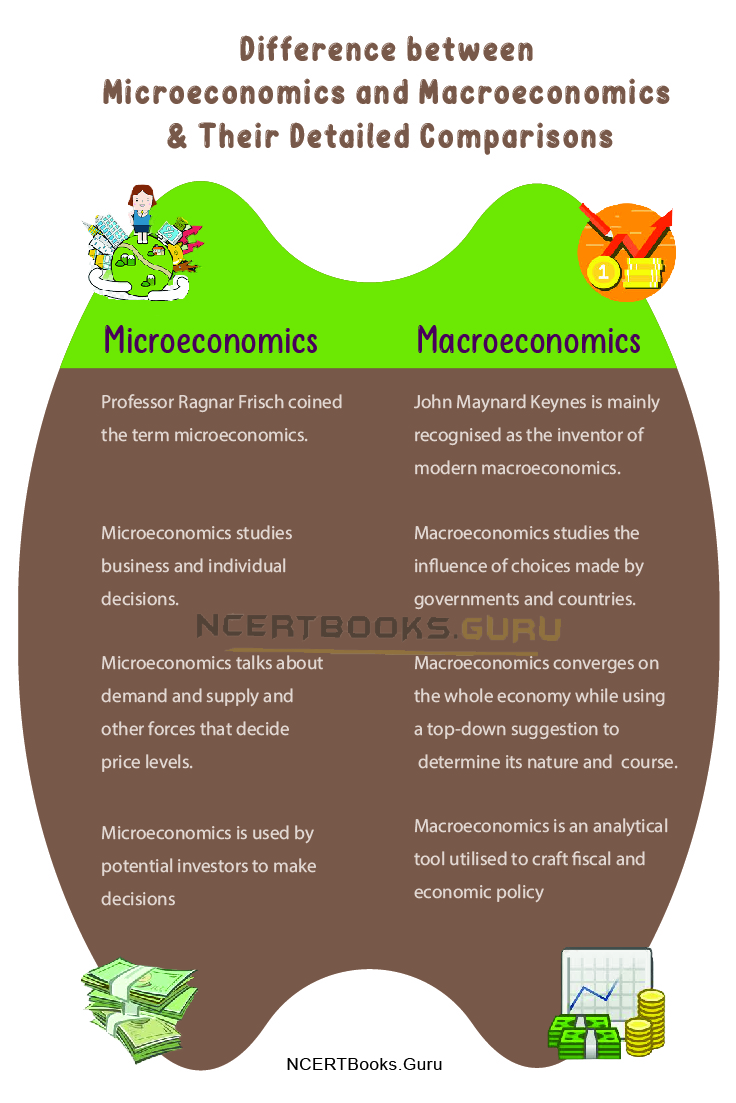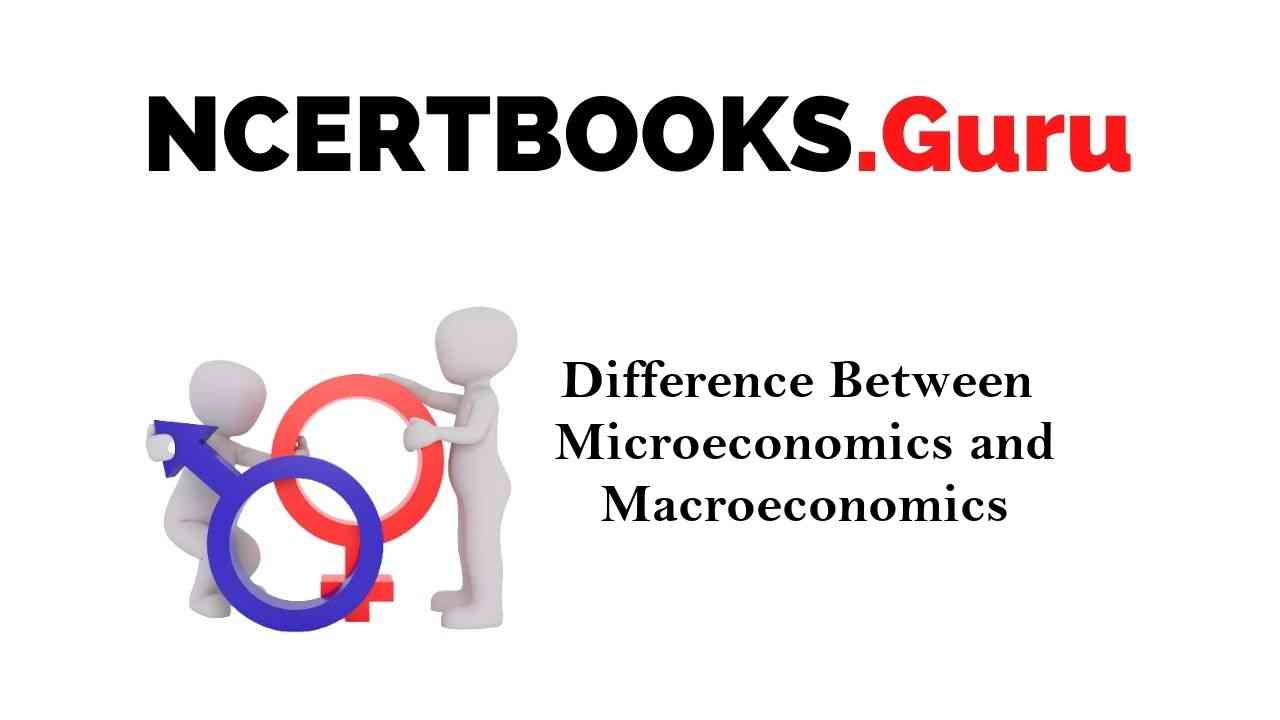Microeconomics and Macroeconomics: Economics is classified into two sections; Microeconomics and Macroeconomics. In more simplistic terms, the study of economics at a more individual level is known as microeconomics, whereas the studies of economic policy at a government-level or country are known as macroeconomics.
You can also find differences between articles on various topics that you need to know. Just tap on the quick link available and get to know the basic differences between them.
What is the difference between Microeconomics and Macroeconomics?
Microeconomics deals with economic conclusions made at a micro or low level alternatively of macroeconomics, which approaches economics from a macro level. While they are interdependent and complement each other, they are still radically different from each other.
The strategy and the scope in which both terms are applied is where the differentiation rises. In 1933 Norwegian economist Ragnar Frisch, the co-recipient of the first Nobel Memorial Prize in Economic Sciences in 1969 introduced the difference between microeconomics and macroeconomics.
Macroeconomics
The study of the behaviour, performance, structure, and decision-making of an economy as a whole is known as Macroeconomics. It concentrates on regional, national and global scales. For most macroeconomists, the discipline’s range is to ensure national economic growth and maximise national income. Economists expect that this growth translates to developing utility and improving living standards for the economy’s members.
Macroeconomists develop models that demonstrate the connection between factors such as output, consumption, national income, unemployment, savings, inflation, investment and international trade. Macroeconomics concentrates on econometric correlations and aggregates and for this purpose, governments agencies depend on macroeconomics to formulate fiscal and economic policy.
Microeconomics
Microeconomics is a part of economics that studies individuals and firms’ behaviour in creating choices about allocating limited resources and communications among individuals and firms. Microeconomics aims to analyse the market mechanisms that set relative prices among goods and services and allot inadequate resources among alternative uses.
Microeconomics talks about demand and supply and other forces that decide price levels. Microeconomic choices by both individuals and small businesses are essentially caused by benefit and cost factors. Microeconomics displays conditions under which free markets lead to desirable allocations. Microeconomics also analyses the failure of the market, where markets fail to produce efficient results.
Microeconomics also deals with the impacts of economic systems on microeconomic behaviour. Microeconomic theory progresses by defining a competing budget collection which is a subset of the consumption set.

Difference between Microeconomics and Macroeconomics
| Microeconomics | Macroeconomics |
| Professor Ragnar Frisch coined the term microeconomics. | John Maynard Keynes is mainly recognised as the inventor of modern macroeconomics. |
| Microeconomics studies business and individual decisions. | Macroeconomics studies the influence of choices made by governments and countries. |
| Microeconomics talks about demand and supply and other forces that decide price levels. | Macroeconomics converges on the whole economy while using a top-down suggestion to determine its nature and course. |
| Microeconomics is used by potential investors to make decisions | Macroeconomics is an analytical tool utilised to craft fiscal and economic policy |
| Microeconomics contributes a picture of the goods and services required for a strong economy. It also predicts which services and goods will have future demand. | Macroeconomics assure that the economic resources prepared in the country are utilised optimally |

